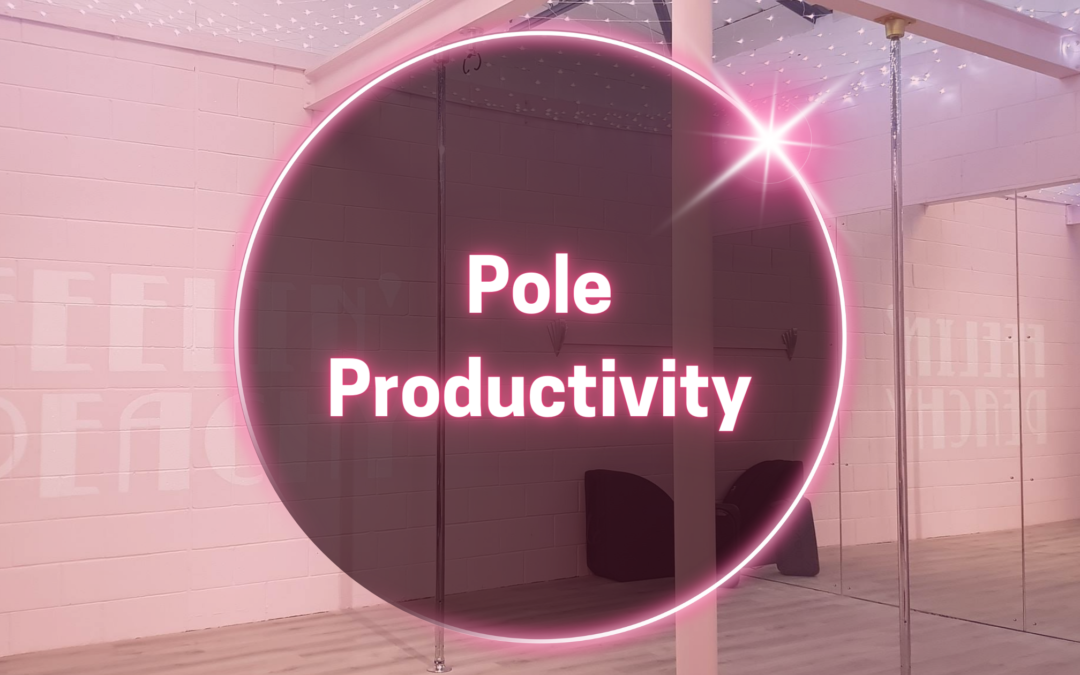We’ve all been there, we turn up at the studio, or we roll into our home pole room. Our bodies are telling us ‘YES I am ready to train’, but our minds, our mindsss are telling us ‘NoooOooOo’. Because we haven’t organised our lives and we have literally no clue what to train today.
Invariably you end up doing very little, and what you do practice isn’t done so effectively. In these types of training sessions you tend to flit between moves and transitions, without any real focus, which doesn’t help you to make the kinds of gains you are hoping for.
How do we beat this? I’ve had people asking me for some advice on how to best maximise their solo training efforts, so here you go! I hope these tips help you out.
Technique 1: Establish You Training Priorities & Schedule Them
Do you need to train your tricks more? Are your transitions in need of cleaning up and polishing? Is your floor work begging for some attention?
Make a mind map or list of all the different aspects of pole dancing that you are currently working on. Then, organise these by most important to least important. You can do this by working out how many training hours a week you have, and then deciding which aspects require the most dedicated time.
For example:
Total training hours available: 6 hours
Tricks training: 3 hours
Flow training: 1 hour
Flexibility training: 1 hour
Cross-training / rehab: 1 hour
Simply saying ‘Tricks are the most important’, doesn’t necessarily quantify the dedication or effort that your tricks training requires at this present moment. It would be easy therefore to put it off or simply not recognise that you aren’t dedicating the hours needed to progress. By assigning a set time to it, you will be more aware and able to think “Hey, have I done all I can to focus on my tricks this week?” If not, you could sacrifice some flexibility training time as you know your tricks are more important at this current moment.
This is also a neat exercise if you tend to be very strong in one area but are looking to improve in another. When you show up to training without any real plan it is really easy to just end up doing what is comfortable. Always working on the same flow, tricks or floor work as you always do. But as the saying goes, growth is always on the edge of discomfort, so in order to improve you need to always be challenging yourself.
Think – Could I dedicate more time to those areas that I’m not so strong at? Make sure you are prioritising those skills and you will find yourself training in a more mindful manner.
Technique 2: To-Do Lists
This is something I employ in my training, especially when I am looking to work on tricks. Faced with a pole and not much else, I know I will always end up working on the same handful of tricks that are most easily remembered. By creating a to-do list I force myself to work on the moves that aren’t as comfortable for me. These are also great for building your self-confidence as you can tick off when you have nailed a move giving you that feel-good pole buzz.
Technique 3: Instagram Saves
Ever liked a bunch of videos on Instagram and thought ‘I will definitely be trying that in my next training session’? And guess what, you bloody well don’t because you can’t find them again to save your life!!! 😠😠😠
Instagram’s Save feature allows you to add videos you want to revisit to ‘collections’.
What you can then is map out your training schedule for the next couple of weeks, and assign certain videos to certain training sessions. This way you will never turn up at the studio with nothing to do! It would be impossible!
Technique 4: Create Manageable Goals
I’ve spoken about the power of creating manageable goals in the past, and I will reiterate myself once again. A goal can be anything from ‘hold my pole sit for 5 slow breaths’ to ‘compete in a pro level competition’. As long as you create goals that are realistic, manageable and time-bound, they can help you to maximise your training.
Gemma over at Love Pole Kisses has a fab blog talking in depth about How to Set Smart Pole Goals, so make sure you check that out, it is full of useful information.
Goals allow you to create an ‘end point’ for your training, something to work towards. Without goals training can feel listless and directionless. You may turn up at the studio and not do much at all because you haven’t given yourself any clear goals to work towards. Start by introducing some goals to your training, and it will help you to focus your studio time.
♥♥♥
So, there you have it! Try these techniques if you are struggling to keep productive during your pole training sessions, particularly when you are at home or in a drop-in without any lesson plans or instructors. You can use these techniques in isolation, or combine them together to help you to maximise your productivity.
Having said that, you will usually find me doing the following, whilst lying on the floor, during pole drop-in 😂😂😂
So do as I say, not as I do!!
Let me know if these have helped you out – pop your thoughts in the comments below. If you have any unique tips let us know, we’re all dying to hear!!

